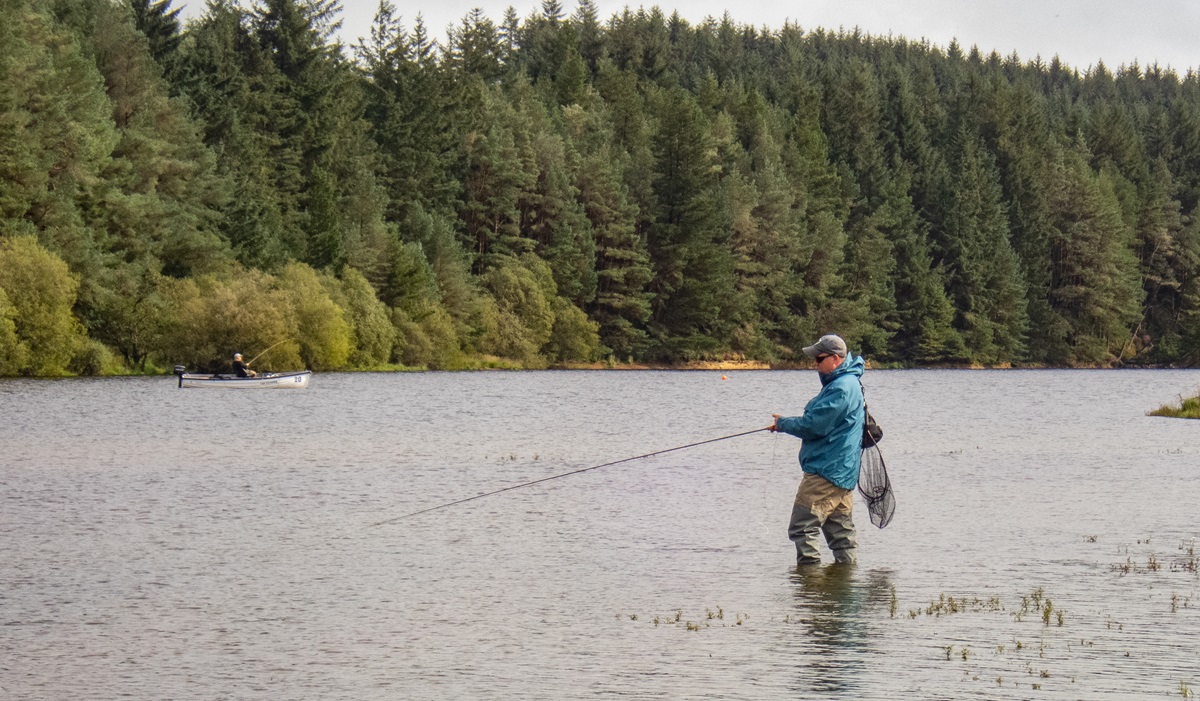Spring On Welsh Beaches
Angling Trust Ambassador Dave Lewis reports on the excellent early spring fishing to be found on Welsh beaches, and in particular how to target rays on bright, pleasant spring days. As usual, fantastic advice for local and visiting anglers.
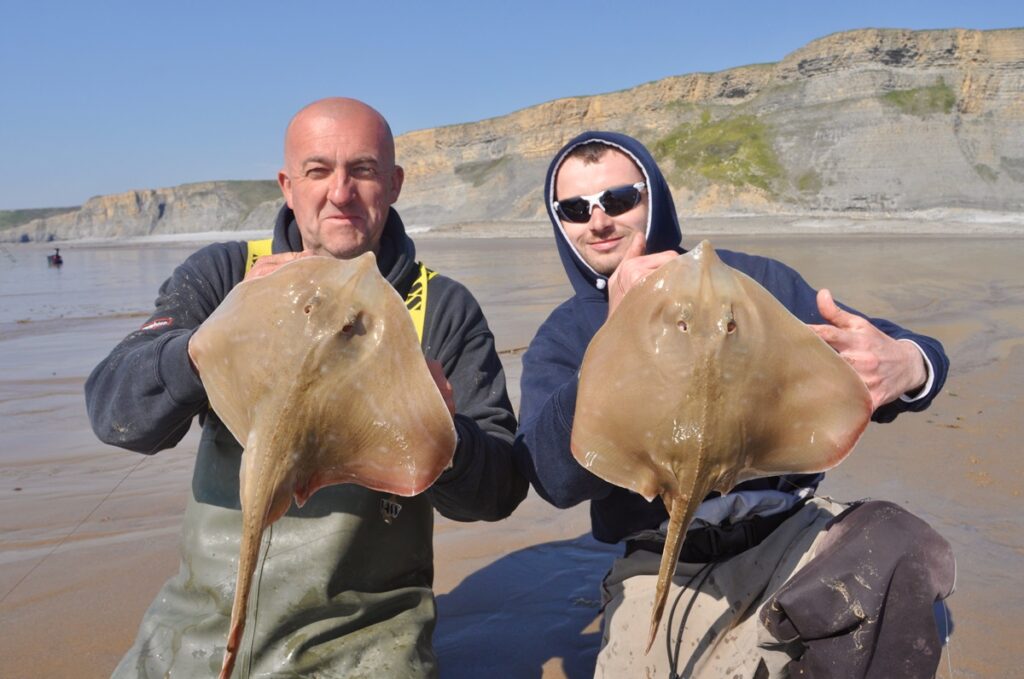
Looking at the images illustrating this article you will see that on the day that they were taken we experienced a combination of bright sunshine, and a flat calm sea. Certainly, these are not what you might call ideal conditions for catching ray, or pretty much any of the other species anglers target when fishing a flat sandy beach.
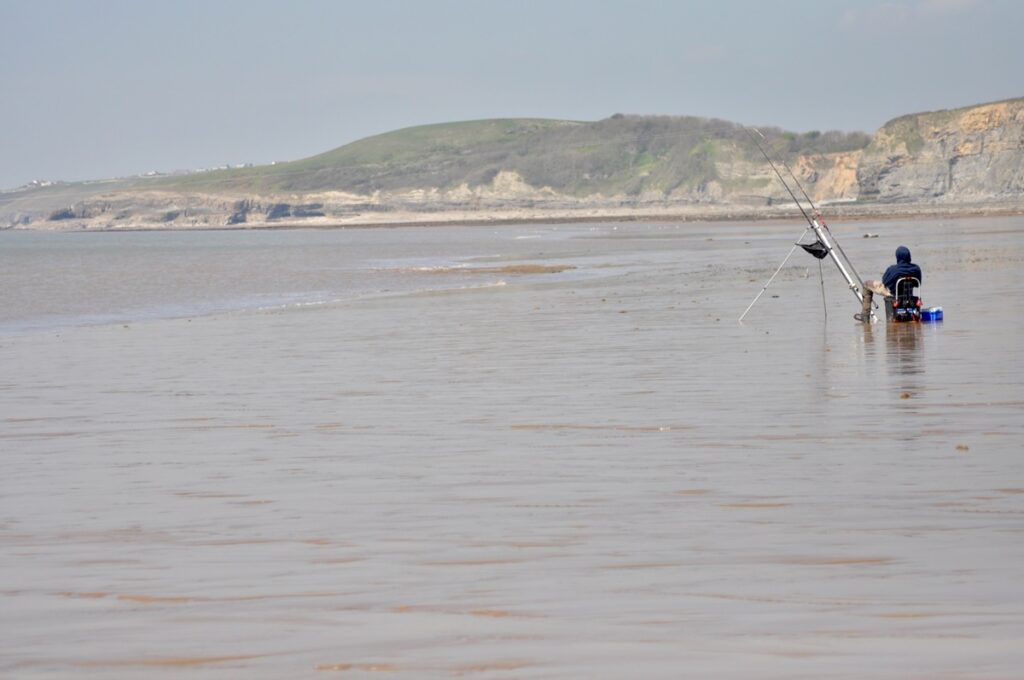
Flat beaches are more typically the sort of venue that is generally more productive when a lively surf is rolling in from the open sea, or when fished at night. And normally I would agree with this, but early in the season, from March through until mid-May, many Welsh beaches do consistently produce fish under precisely such conditions.
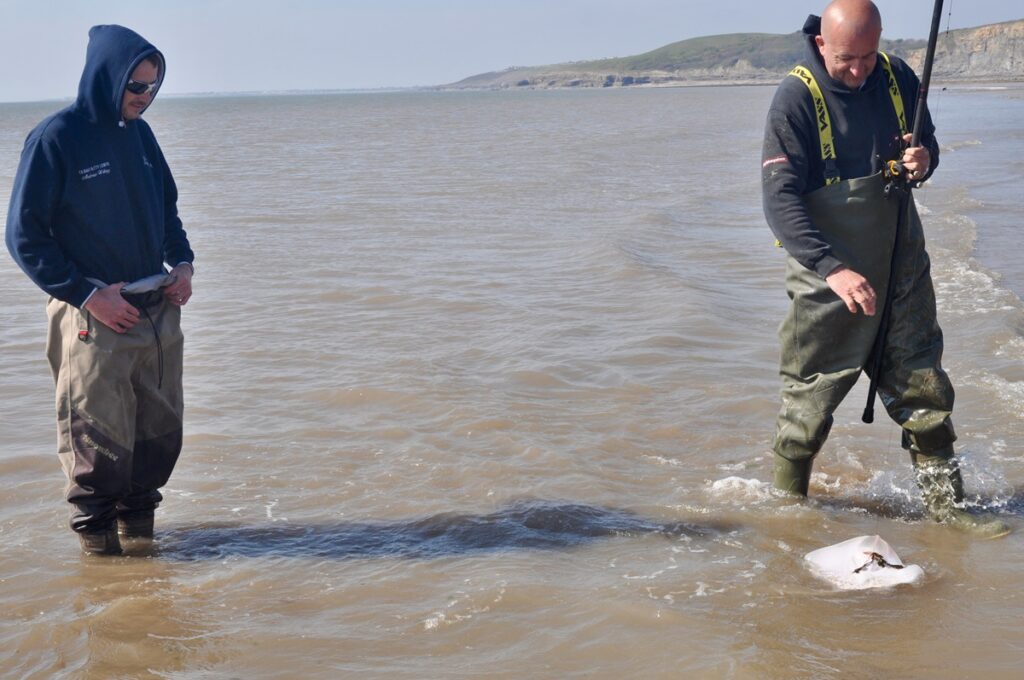
So just why is this? Well, the general consensus of opinion amongst those who anglers who realise can be the case is as follows. Throughout Wales low water on mid-range to spring tides, prime tides for targeting ray on many beaches, coincides with a couple of hours either side of midday.
During periods of fine, settled and clear weather this allows any sunshine to warm the inter-tidal sands. Then as the tide starts to steadily creep it’s way back up the beach this stored warmth is transferred to the shallow water, raising the temperature to just that little bit warmer than the ambient sea temperature.
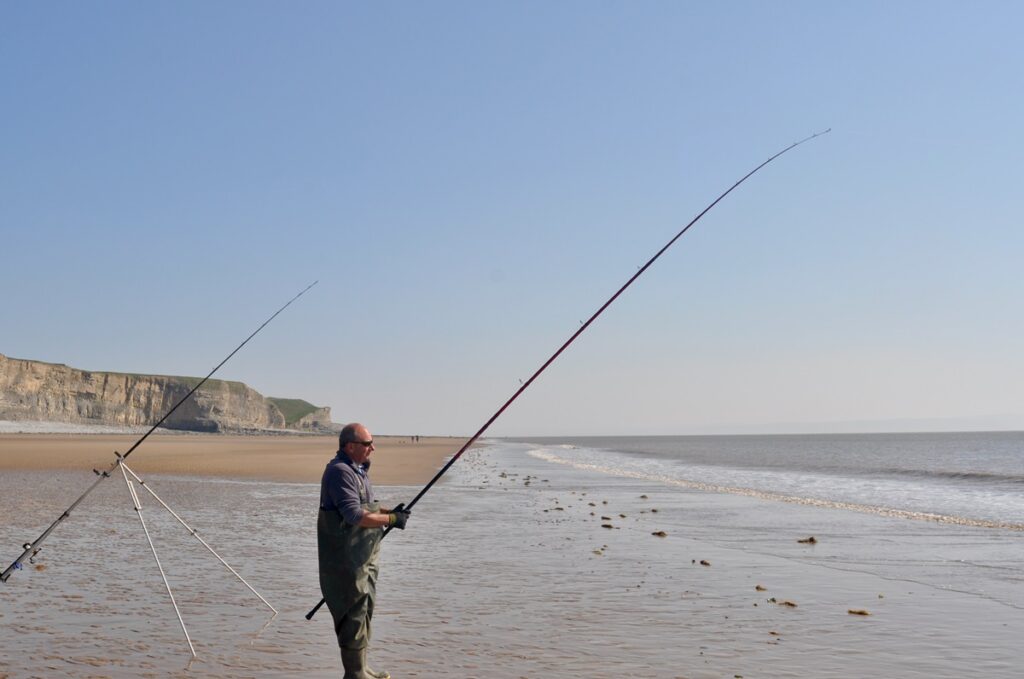
This creates more favourable conditions for foraging fish such as dogfish, ray and the various species of flatfish, all species that are more likely to venture into such shallow and clear water after dark throughout the summer and autumn.
The optimum time to fish many sandy beaches is for two to three hours either side of low water. As a rule of thumb ray are usually most active during the first hour or two of the flood; adding to the evidence of the warm beach, warmer water theory above.
Here in Wales during the spring, the most common species of ray caught from sandy beaches, especially in the south and west, is the small-eyed-ray, which is also known as the painted ray. As a point of interest the one time British shore caught record for this species was caught in May 1991, at Sker Rocks in South Wales, it weighed just over 15lb.
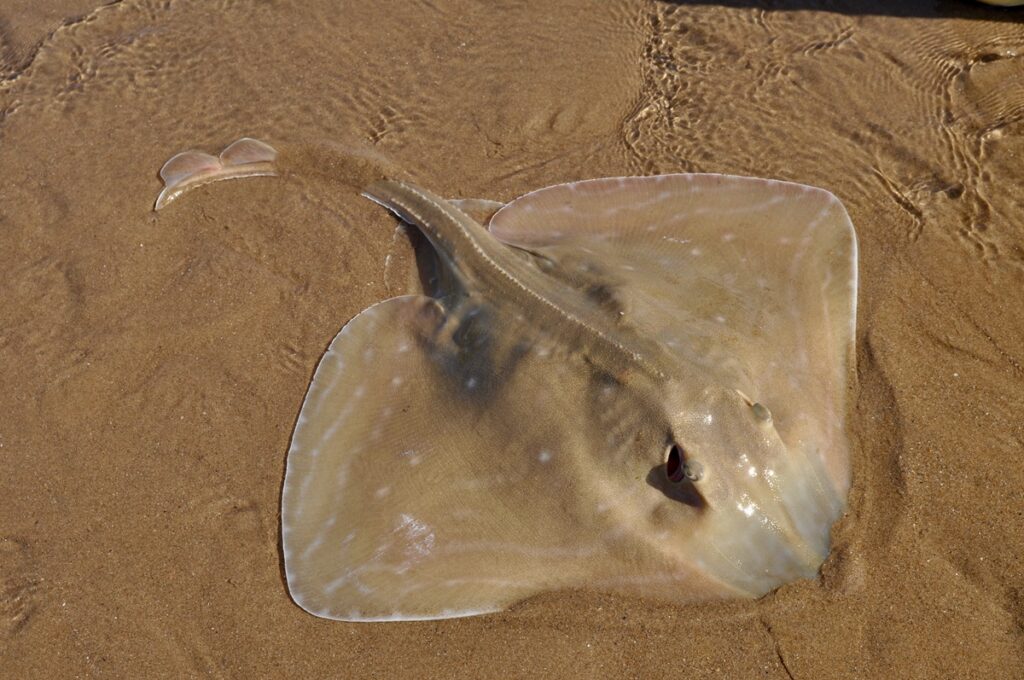
Thornback and spotted ray can also be caught, especially if fishing in the vicinity of rough or broken ground. Later in the year, especially when fishing the Bristol Channel beaches to the east of Swansea Bay, blonde ray are increasingly a common catch with shore anglers, many of whom travel from all over the country to experience the exceptional fishing.
When fishing flat beaches there can be no denying that those anglers who are capable of fishing a bait at extreme range will always have the advantage, especially when targeting ray. They are able to present their baits at short, medium and long range, however long range casting is not always necessary.
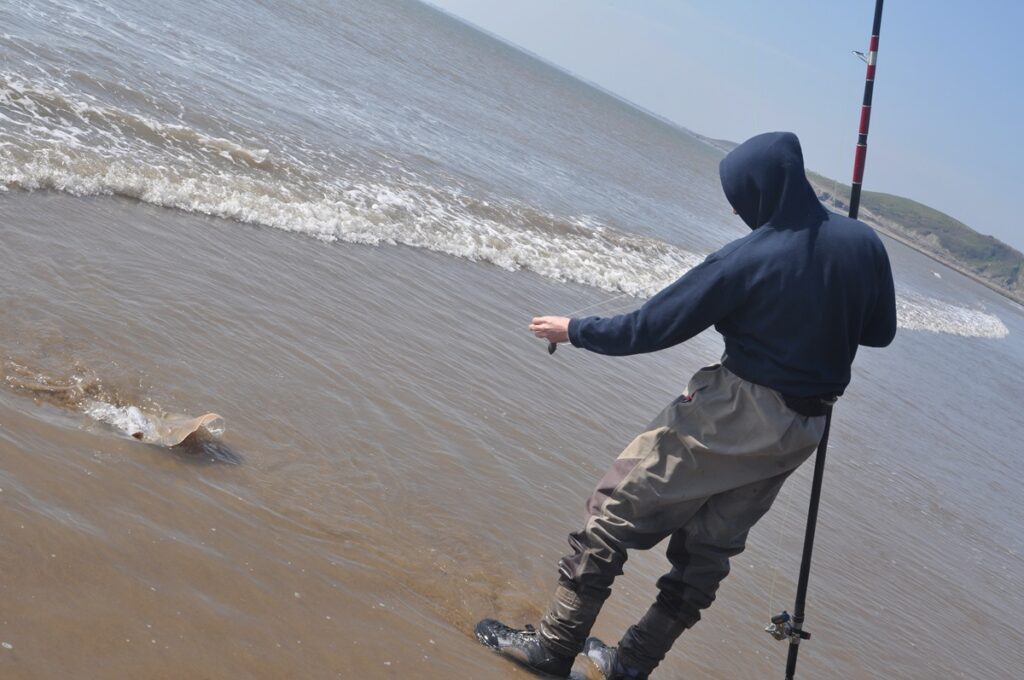
A good tactic employed by anglers with an average casting ability when fishing a flooding tide, is to cast a baited rig to their maximum range, and to then leave the rig out in situ by releasing more line off the reel as the encroaching tide pushes them back up the beach. But as I have said it is not always essential to present baits at long range, as often species such as dogfish and even turbot can be caught at surprisingly short range.
Good quality blast frozen sandeels are the number one bait of choice whenever fishing for ray, and other species from a sandy beach. Of course this is hardly surprising as these will be amongst the tasty items of food that will have encouraged the fish to venture into shallow water to feed in the first place. When focusing specifically on rays the bait of choice with many of the best anglers I fish with is a single sandeel/squid cocktail.

When it comes to your choice of rig either a ‘pulley rig’ or a ‘fixed paternoster’ tied with long hook lengths are effective for rays over clean ground. Hook lengths are typically 4-5ft of at least 50lb BS monofilament.
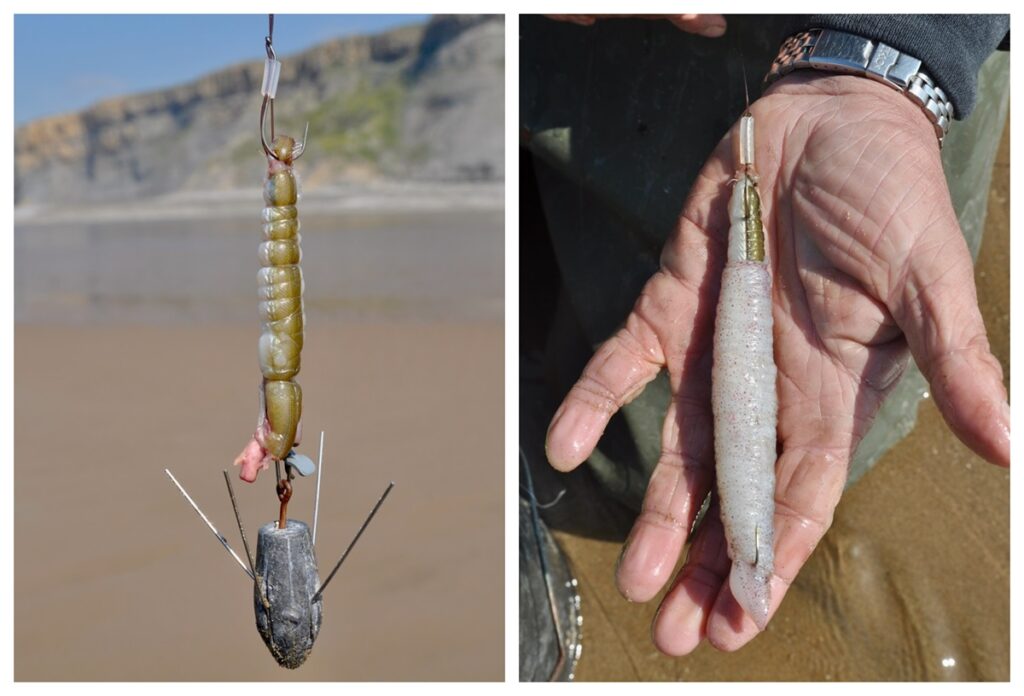
Ray do not have sharp teeth, but they do have incredibly strong crushing jaws, that will make short work of inadequate monofilament. The hook length will terminate in a pennel rig, tied using size 2/0-4/0 hooks.
The optimum size of hook is one matched to the sizes of bait you are using. What is very important is that always the bait is rigged so that both hook points remain clear and exposed, and cannot in anyway end up masked by the bait.
Hook points hidden with the bait will result in missed bites; fine bait elastic ensures the bait is perfectly presented. If there is a strong pull of tide, or when leaving a bait in place and walking back up the beach as described, breakaway style grip leads in the region of 5-6oz are ideal.
Ray bites typically fall to within two distinct categories. The first is a gentle quivering and vibration of the rod tip, a result of the fish locating the bait and then shuffling around as it starts to work what is usually a bulky bait into it’s mouth.
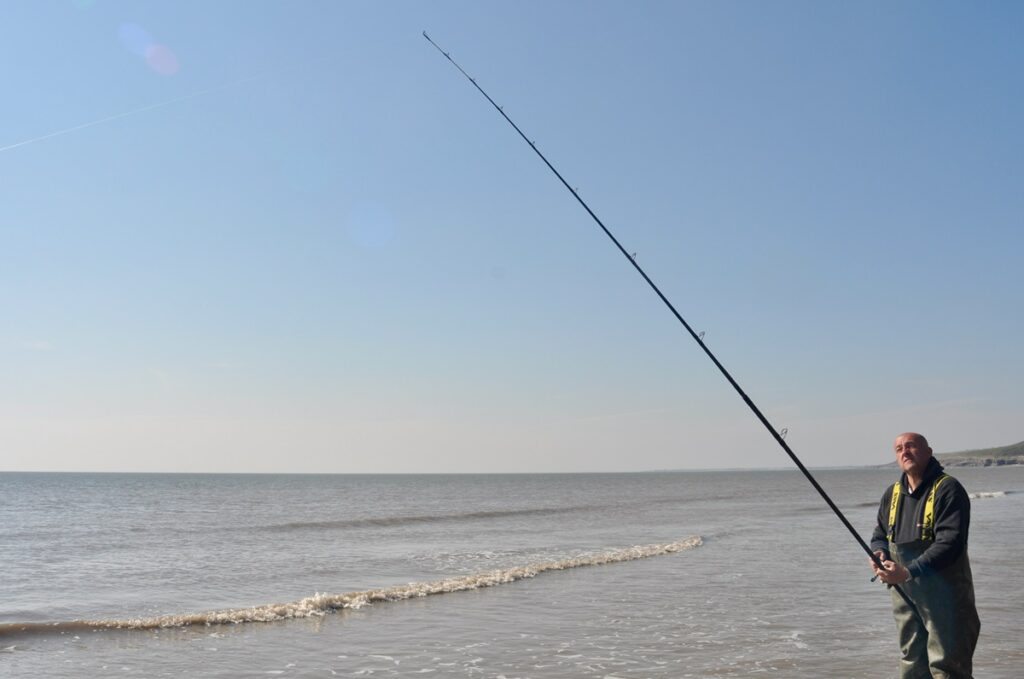
The other is when the line suddenly drops slack. The latter happens when the initial bite has gone unnoticed and the fish has fully taken the bait then swum off, breaking the lead free.
In the first instance it is important to give the fish plenty of time to take the bait before you attempt to set the hook. In the second instance simply pick up the rod and quickly reel in the slack line, then lift the rod firmly to set the hook.
So if you are a shore angler planning on heading to Wales for the Easter Holidays, you will be delighted to know that you will be here at prime time for exactly the sort of fishing I have been talking about. You can either bring your own frozen bait with you, but you’ll find bait along with anything else you might require at any of the many tackle shops located all around the coast of Wales.
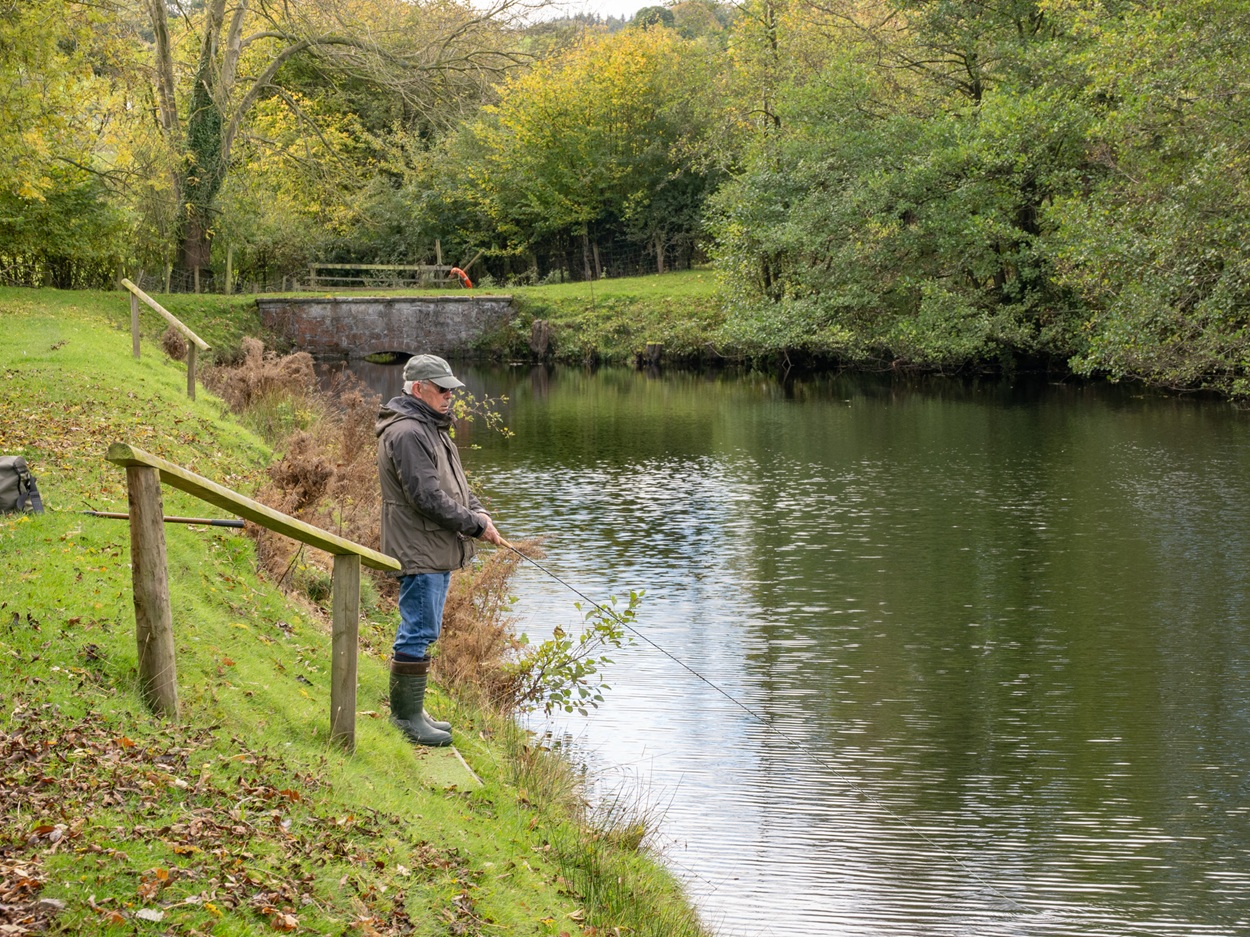
Fishing Clubs of Wales: Rhyl & St Asaph Angling Association VIDEO
We join Chris Porteous of Rhyl & St Asaph Angling Association on their club lake, where Chris shares information about…
Read More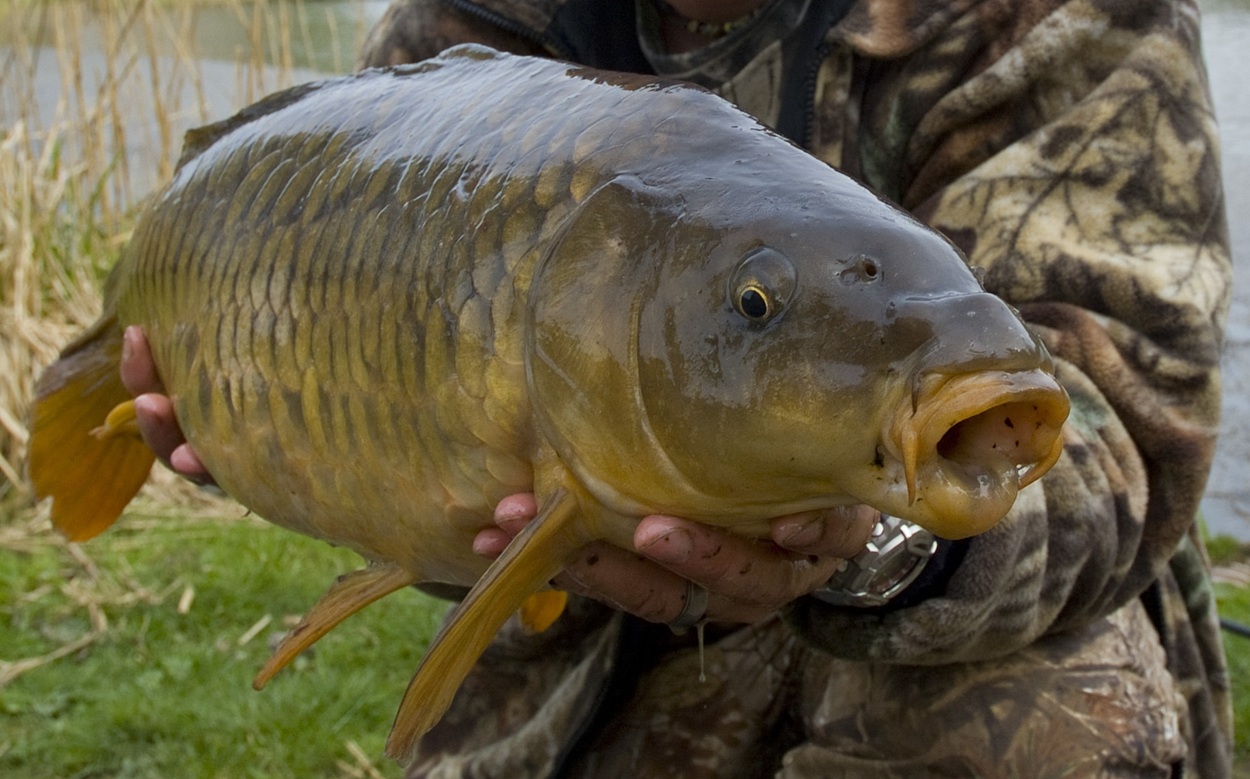
Winter Stillwater Carp Fishing
Wales may not be world renowned for its carp fishing, but a plethora of superb options do exist, with hundreds…
Read More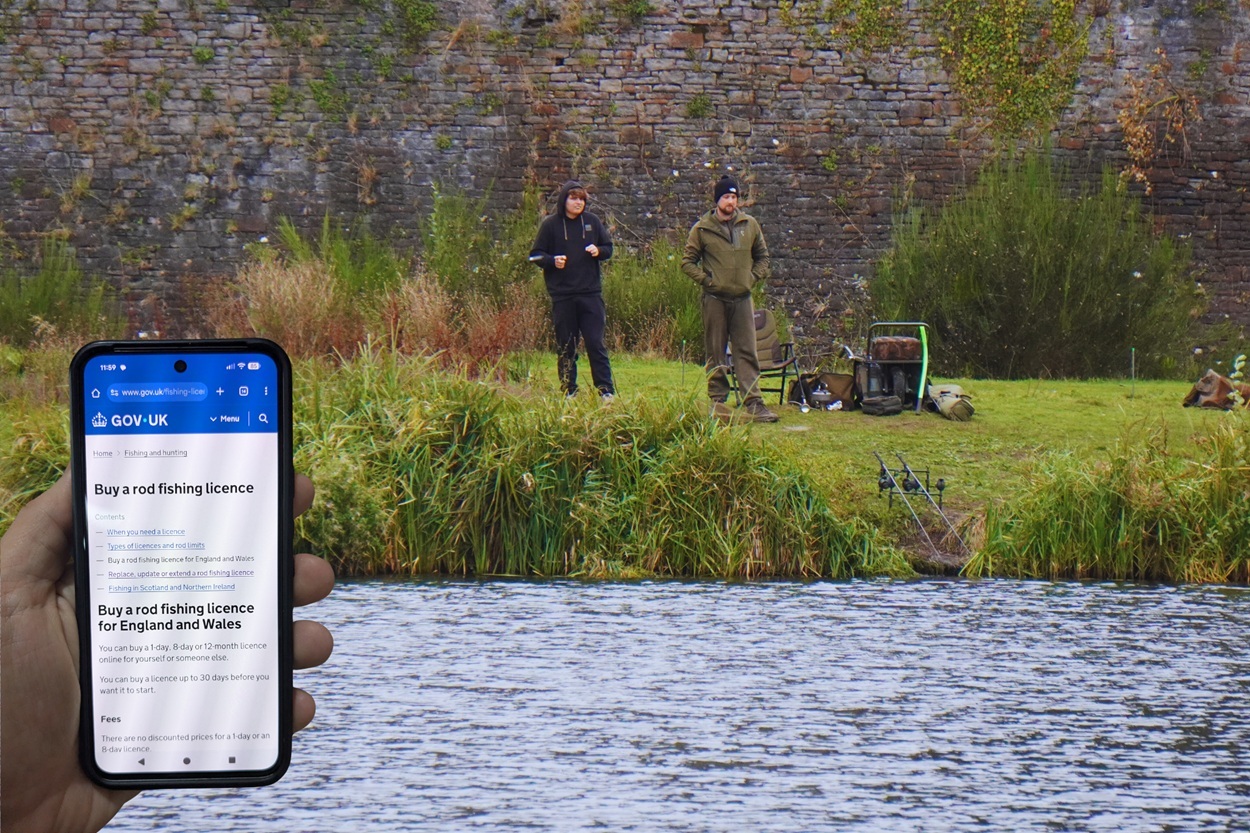
New rod licence subscription service launched!
Anglers can now sign up for an annual rod licence subscription via the ‘Get a fishing licence website’: Buy…
Read More

